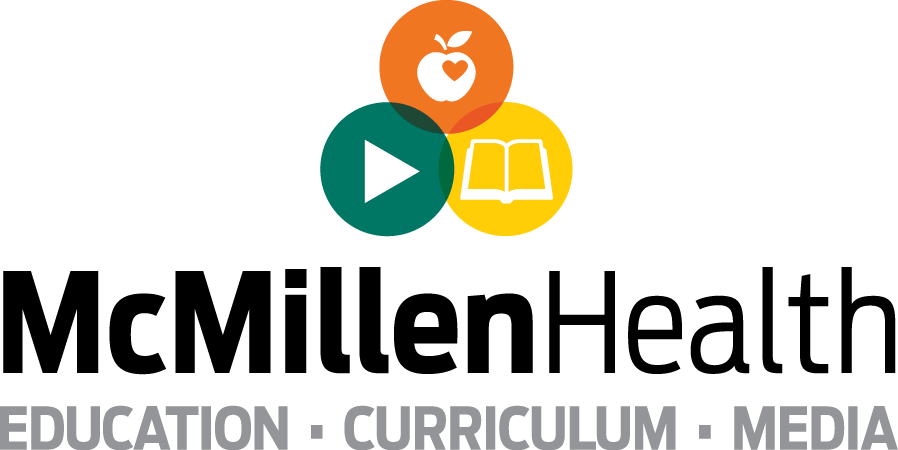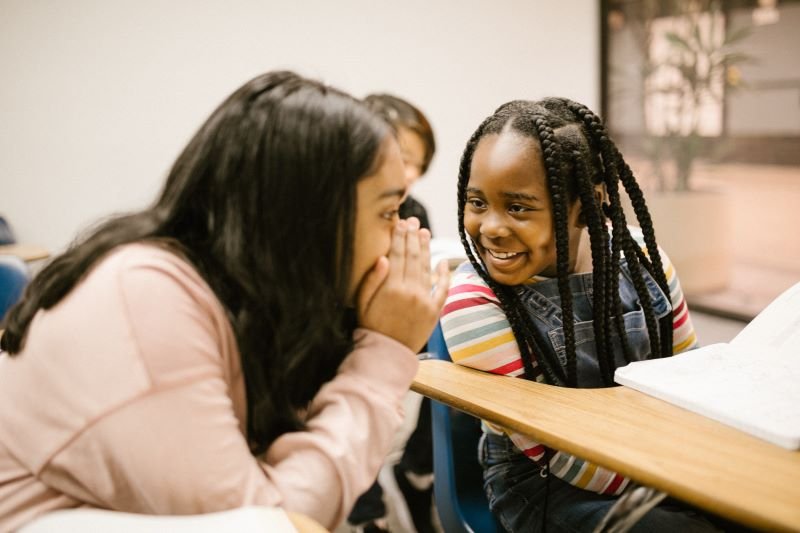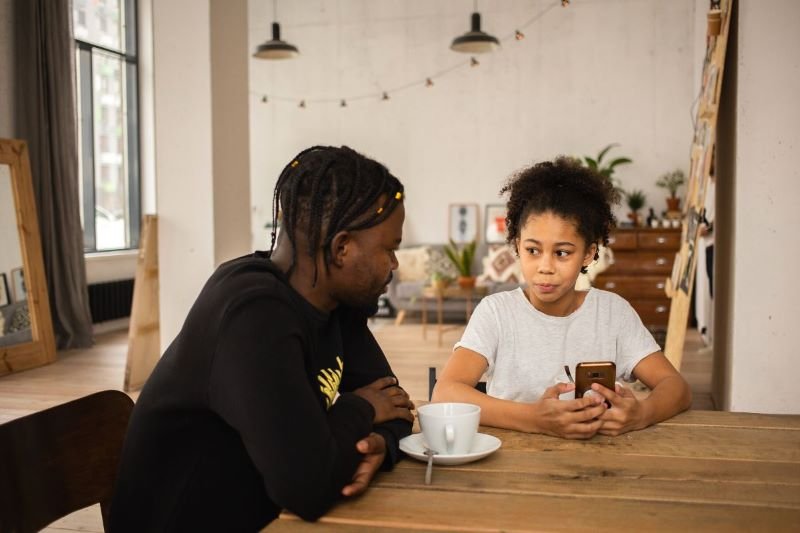Social Bullying: Facts, Stats, and 14 Anti-Bullying Programs
Social bullying is a type of bullying. It happens when someone tries to harm a person's relationships or reputation. Social bullying can happen online or in person.
Examples of social bullying include:
Spreading rumors about someone
Leaving someone out of groups or events
Embarrassing someone in public
Preventing people from talking to someone
This blog post will discuss social bullying, its effects, and how to prevent it from happening.
Types of Bullying
Bullying is unwanted, repeated actions done by a person or group against a targeted person.
These acts and gestures could be:
Verbal
Written
Physical
Electronic
The purpose of the acts is to:
Scare
Harm
Ridicule
Embarrass
There are three main types of bullying: physical, verbal, and social.
Physical bullying is when someone uses their body or a weapon to hurt or scare another person.
Verbal bullying is when someone uses words to hurt or scare another person.
Social bullying is when someone tries to hurt another person's relationships or reputation.
Cyberbullying is verbal or social bullying through instant messaging, social gaming sites, email, texting, or social media.
What is Social Bullying?
Social bullying is when a person tries to hurt another person's relationships or reputation. This harms the targeted person’s mental health because it affects their sense of belonging. Part of human nature is the desire to feel accepted as a member of a group.
Social bullying can happen online or in person. Because social bullying can be indirect or direct, it can be hard to identify.
Indirect Social Bullying
Indirect social bullying could be:
Ignoring someone
Walking away when someone is speaking
Not inviting someone to join a group or activity
Trying to influence someone's friendship with another person
Spreading rumors
Indirect social bullying can be hard to identify. The target of social bullying may not report the bullying because they don’t have evidence of what happened. For the same reason, teachers, school administrators, and parents may feel like they can’t address indirect social bullying.
Gaslighting
A social bully may use gaslighting as a tactic if they are confronted. Gaslighting happens when one person (the bully) tries to get another person (the target) to question their own memory or experience. Because social bullying can be subtle, a target of bullying will question how serious the situation was.
Let’s look at this quick example. A bully may intentionally ignore another student during a group meeting. Later, when confronted, the bully will insist they simply did not hear their classmate talking.
Direct Social Bullying
Social bullying can also be direct, such as:
Telling someone they aren't welcome
Telling people to not be friends with or not include someone
Humiliating someone
Direct social bullying can still be challenging to report. These situations are often one person's words or interpretation of a situation against another.
Cyberbullying
When social bullying takes place online, it is called cyberbullying. A bully can use their phone or social media to spread rumors, embarrass someone, or try to harm a target's friendships. With or without evidence, social bullying online is hard to report.
The Effects of Social Bullying
Social bullying can have severe consequences for targets. The goal of social bullying is to isolate a targeted person from others. This means the person will already feel alone and believe they have no one to turn to for support.
Bullying can have lifelong effects on a child. Being a target of bullying can harm a student's mental health, relationships, academic performance, and physical health.
According to the CDC, bullying "increases the risk for depression, anxiety, sleep difficulties, lower academic achievement, and dropping out of school."
The stress caused by social bullying also impacts physical health.
Stress leads to:
Headaches
Muscle pain
Insomnia
Digestive issues
Weakened immune system
Long-term stress can cause high blood pressure and an increased risk for heart attacks.
Statistics on Social Bullying
According to the National Center for Education Statistics:
In 2019, more students in 6th-8th grade (about 28%) reported being bullied than students in 9th-12th grade (about 17.5%)
22% (or almost a quarter) of all students ages 12-18 reported being bullied at school
Of that 22%:
About 15% had rumors spread about them
14% were made fun of, called names, or insulted
6% were purposely excluded from activities
Keep reading to learn about how to prevent social bullying.
Preventing Social Bullying
Adults working with children need to acknowledge bullying behavior when they see it. They need to label what behavior is inappropriate or hurtful.
Adults can also help students look at an act of bullying from the targeted person's point of view. When students develop empathy, they will better understand why certain behaviors are not okay.
For Adults in School Settings
1) Stop behavior.
Immediately stop the behavior. This sets an expectation for the bully and the bystanders.
Do not "call out" the bully in a way that shames or embarrasses them.
2) Enforce consequences.
Follow through with prompt, consistent discipline according to your school’s guidelines.
3) Maintain confidentiality.
Don’t share the names of those who report bullying.
Meet with students privately to discuss bullying.
4) Involve a counselor.
Targets of bullying may need additional support from a mental health professional.
5) Contact parents/guardians.
Partner with families to reduce and prevent bullying.
6) Model and reinforce positive behavior.
For Parents
1) Have regular conversations with your child.
Use mealtimes or car rides to discuss topics such as bullying.
Let your child know they can come to you with problems.
2) Encourage your child to talk to a trusted adult.
Make sure your child can identify other trusted adults. These could be family members, teachers, counselors, coaches, and religious leaders.
3) Get to know your child's friends and classmates.
Talk to your child to learn about their peers.
Take time to get to know your child's friends. You can be a trusted adult in their lives.
4) Know your responsibilities.
If your child is bullying, you may be legally liable.
Bullying Prevention: What Doesn't Work
Telling students not to tattle
Expecting the target of bullying to find a solution themselves
Ignoring bullying
Learn more about how adults can prevent bullying in our program Bully: Critical Steps to Intervention.
Anti-Bullying Practices for Students
Students can help create a positive environment by using anti-bullying practices.
1) Don't bully others.
This simple rule only works if students receive anti-bullying education. Students are less likely to bully when they understand what bullying is and its consequences.
2) Try to help when someone is being bullied.
Students who witness bullying can reach out privately to the target.
Students can include someone who is being left out.
Students should not intervene in unsafe situations. Instead, they need to find an adult and report what happened.
3) Always report bullying to a trusted adult.
Check out McMillen Health's anti-bullying programs for more education for students.
What to Do If You are Being Bullied
It can be tough to know what to do if you're being bullied. Remember, bullying is when someone repeatedly tries to hurt, scare, or embarrass you.
The best step is to talk to a trusted adult. Share what happened in detail so that the person listening has all the facts. If you can document what is happening, it is easier to report.
You might be worried that you are “just tattling.” Tattling means you want someone to get in trouble. Reporting bullying means you need an adult's help. You are not tattling if what happened to you was harmful.
If the adult you talk to does not help or doesn't seem to believe you, then find another adult you trust.
Resources for Social Bullying
Bullying comes in many different forms. Social bullying can have a lasting impact on a person's life. Fortunately, there are ways everyone can help prevent bullying. If you or someone you know is being bullied, please reach out for help.
Anti-Bullying Programs at McMillen Health
Using high-tech media rooms, our educators can reach classrooms anywhere with an internet connection.
Elementary:
Middle School:
High School:
Students with Disabilities
Bye-Bye Bully (Elementary)
Hesitate to Intimidate (Grades 6-12)
Wired & Routed: Cyber Bullying (Grades 6-12)
Adults with Disabilities
If you want to learn more about McMillen Health's anti-bullying programs, please visit our program guide or call us at 1-888-240-7268.




